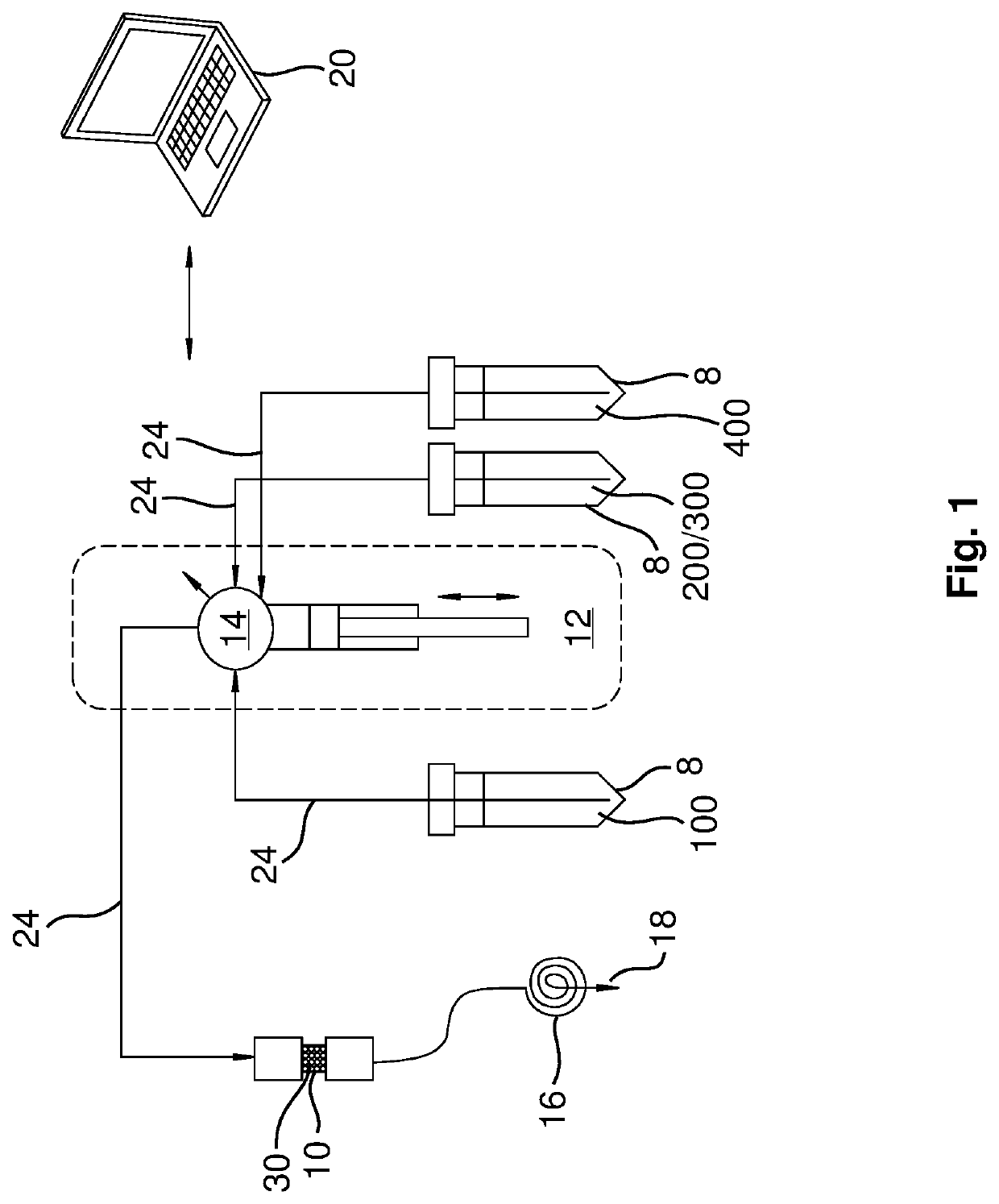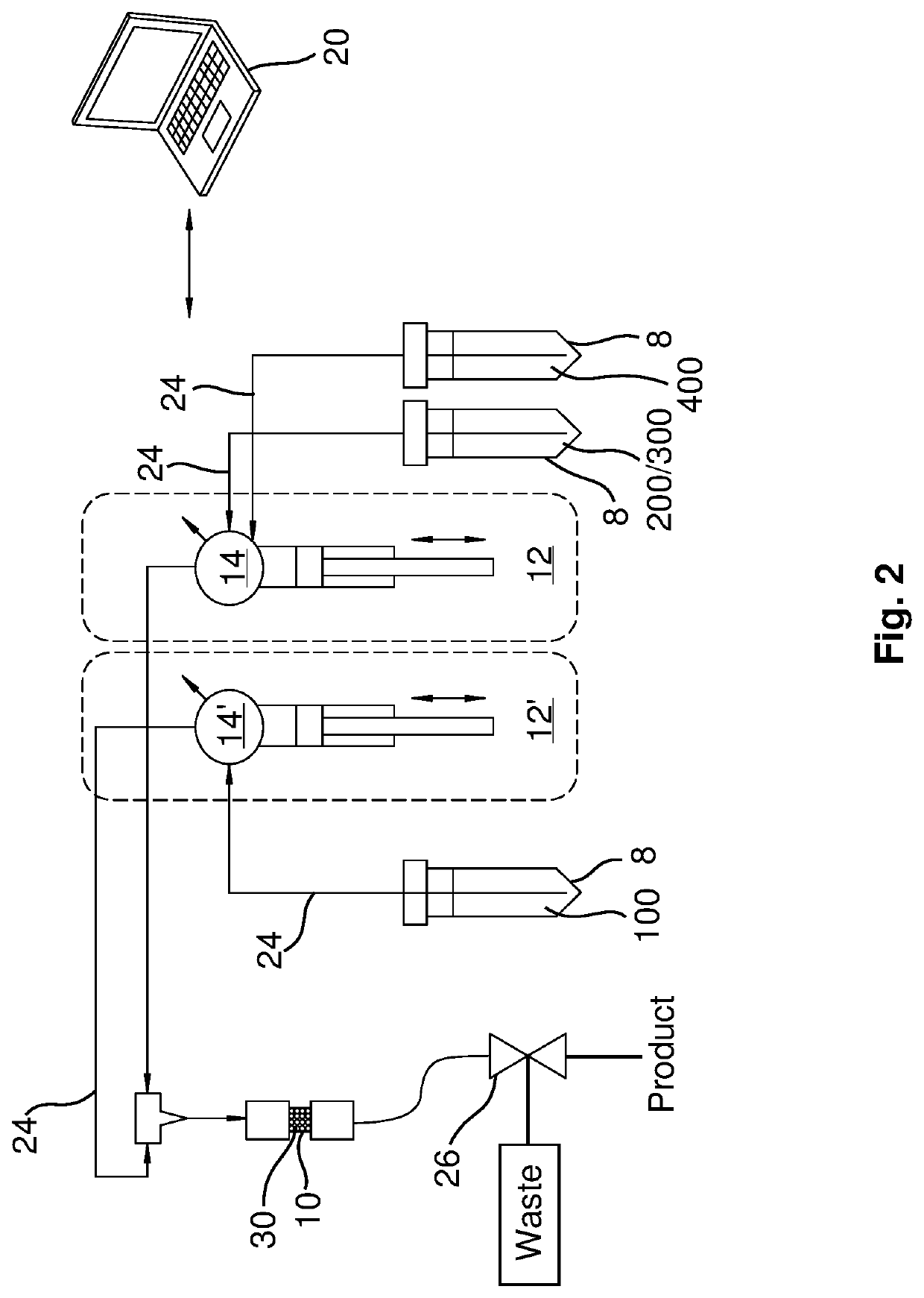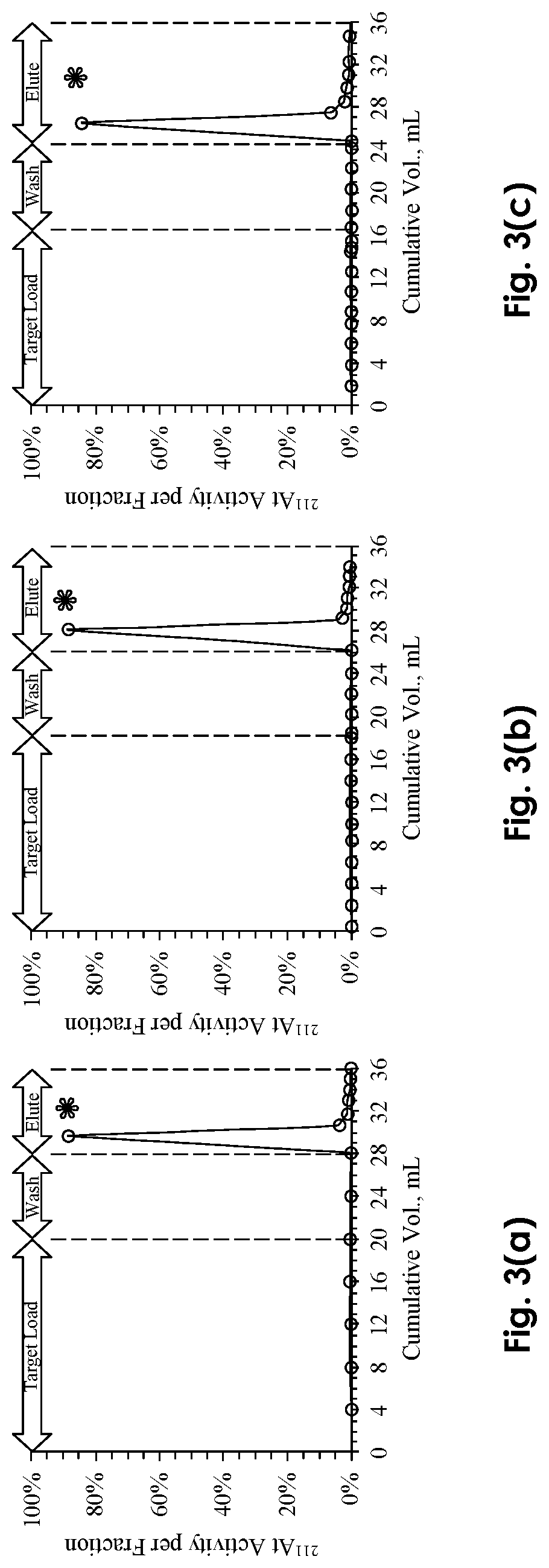System and process for purification of astatine-211 from target materials
a technology of astatine and target materials, applied in the field of system and process for enhanced purification of astatine 211 (211at) from target materials, can solve the problems of unpurified product, unfavorable commercially available fully automated systems and approaches, and laborious manual approaches, so as to reduce preparation time, reduce processing complexity, and reduce the effect of processing complexity
- Summary
- Abstract
- Description
- Claims
- Application Information
AI Technical Summary
Benefits of technology
Problems solved by technology
Method used
Image
Examples
Embodiment Construction
[0017]The present disclosure provides examples and descriptions of enhanced purification and chemical isolation of 211At for medical and therapeutic applications such as diagnosis and treatment of cancer in patients. In many of these examples purification using a separation column with a small internal volume as low as ˜0.25 cc provides substantially quantitative extraction of 211At from dissolved cyclotron targets at selected flow rates. These separation columns can be packed, for example, with an uncoated material containing a macroporous polymeric resin such as AMBERCHROM® CG-71s that is sandwiched in the column, for example, between two acid-resistant frits.
[0018]Various examples and embodiments of specific disclosures are provided hereafter and described in the attached drawings. Referring first to FIG. 1, a separation system and approach for production of a purified radioisotope 211At product from dissolved cyclotron targets for therapeutic applications is shown and described....
PUM
 Login to View More
Login to View More Abstract
Description
Claims
Application Information
 Login to View More
Login to View More - R&D
- Intellectual Property
- Life Sciences
- Materials
- Tech Scout
- Unparalleled Data Quality
- Higher Quality Content
- 60% Fewer Hallucinations
Browse by: Latest US Patents, China's latest patents, Technical Efficacy Thesaurus, Application Domain, Technology Topic, Popular Technical Reports.
© 2025 PatSnap. All rights reserved.Legal|Privacy policy|Modern Slavery Act Transparency Statement|Sitemap|About US| Contact US: help@patsnap.com



